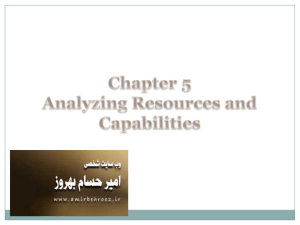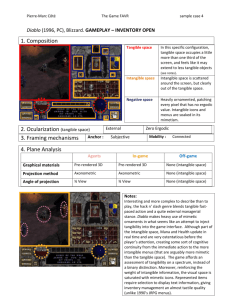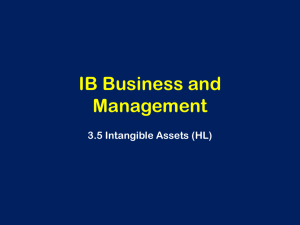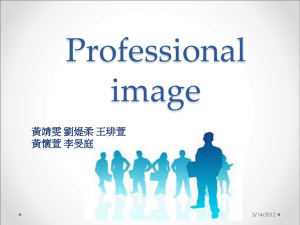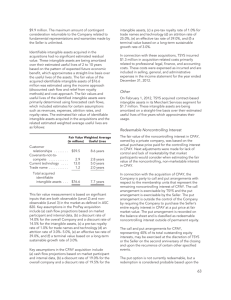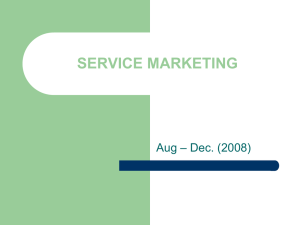Intangible Benefits of Travel Training
advertisement
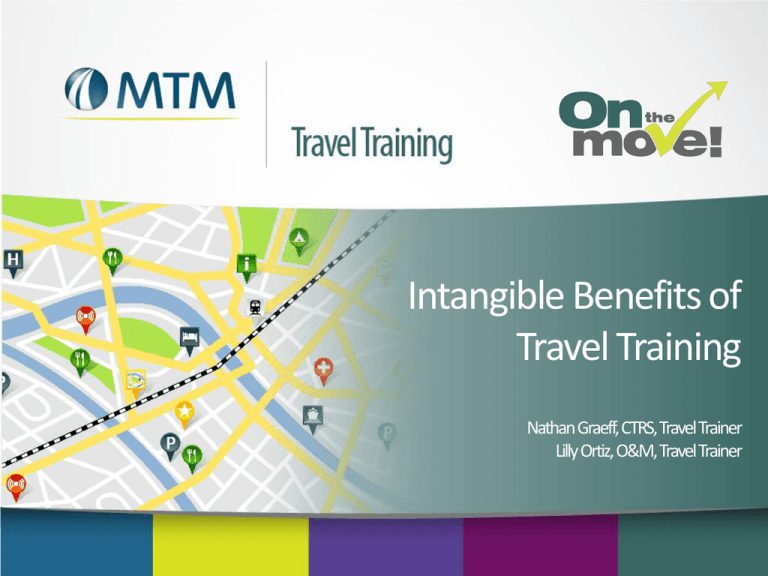
Intangible Benefits of Travel Training Nathan Graeff, CTRS, Travel Trainer Lilly Ortiz, O&M, Travel Trainer Introduction Monetary benefits as a result of travel training are very important to transit agencies; however, as instructors we are witness to a host of intangible benefits that training can bring. We would like to show that these intangible benefits are valuable because of the effect they have on the individual, their families and local community. Public Transportation Tangible Benefits Three common viewpoints: 1. Financial – directly to transit agency providing service 2. Economic – open market worth of the bus/train ride 3. Political – collective viewpoint of community values Public Transportation Intangible Benefits 1. Economic-Focused Definition: “Subjective benefits that cannot be measured in monetary terms.” 2. Rider-Focused Definition: “Intangible benefits are positive effects that cannot be held in hand, measured or given a set value.” What are intangible benefits? Social Socialization Participation Emotional Mood Morale/positive thinking Cognitive Concentration/focus Decision making Physical Personal health Activity level What are more intangible benefits? Independence Locus of control Rediscovered independence Life Satisfaction Quality of life Overall well-being Personality Attitude Thought process Overall Quality of Life The more happy people are, the less they are focused on the negative. They also tend to like others more, which creates an overall happiness which then correlates to a higher level of satisfaction with their life. - Martin Seligman, Ph.D. Clientele Focus School-age students People with intellectual or developmental disabilities People with physical disabilities Older adults and Seniors Ripple Effect An effect from an initial state can be followed outwards incrementally Can be in a positive or negative manner Dependent on many factors including the Travel Trainer, program, previous experiences, skills and ability of client and client’s environment. Bigger Picture Benefits to family and caregivers Benefits to community Benefits to public transit agency Measurement So how do we attempt to measure the immeasurable? This is a proposed idea, based on a combination of scales used to loosely construct this scale Require assistance and feedback from those in the field in a pilot program of sorts Marketability Client Targets: • Choice Customers – those who choose to use public transit but have alternative transportation (paratransit services) • Potential Customers – those who have not yet used public transit due to alternative transportation Community Targets: • Transitional services • Day programs • Rehabilitation hospitals/facilities Marketability Transit Agency Targets: • Agency focus Usability Public image • Community focus Livability Access • Personal focus Empowerment Well-being Marketability Social Cost-Benefit or Cost-Effective Analysis • Takes into consideration the monetary and non-monetary costs and benefits on a society What “cost” or “price” is put on an individual’s selfworth or independence? For Transit Agencies, some intangible benefits can be funneled into financial categories Feedback We look forward to your feedback regarding our scale and measurement technique. We invite you to send us your thoughts, comments, concerns and suggestions to help us in developing a scale that can be used in any travel training setting. Email: ngraeff@mtm-inc.net OR lortiz@mtm-inc.net Tweet: @OnTheMoveDC Questions or Comments?

